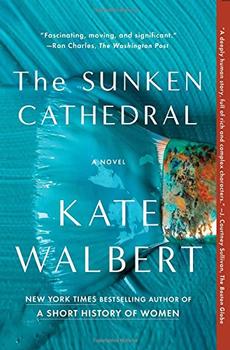Summary | Excerpt | Reviews | Beyond the book | Read-Alikes | Genres & Themes | Author Bio

The notion that "childhood is a trauma you spend the rest of your life getting over" would apply to Marion, the main character of Linda Olsson's new novel The Memory of Love. Marion, who is originally named Marianne but changes her name to separate herself from her painful past, moves from London to a remote coast of New Zealand to escape her memories. A retired surgeon, she lives in a small house on a desolate bit of land by the sea. She takes walks, tells the time by the sun, and exists in a tightly controlled, emotionally isolated life. When she meets the young boy Ika, a partially autistic child, who loves the sea as much as she does and has a painful home situation, she begins to reorder her life in new ways. She cooks soup for him in anticipation of their Thursday meetings and allows him to play her piano. As she gets to know Ika and feels the happiness of caring for someone else, she embarks on a reconstruction of her past. Moments from her childhood flood her brain, reacquainting her with thoughts and feelings that she has not allowed herself to have for decades. Olsson intersperses Marion's present with vivid depictions of her past, creating a deeply affecting story that explores the ways in which the human heart can heal.
Olsson's novel investigates loneliness and healing, themes that are enhanced by the story's structure and narration. The novel opens with Marion making soup, a somewhat ironic image. This lonely woman on the edge of an endless sea makes a meal normally intended for a family or a large group. The images of loneliness, windswept seashore, and anticipation set the stage for the novel. Though Marion professes to be satisfied with her isolation, she yearns for companionship. Olsson uses first person narration to collapse the distance between reader and main character. At first Marion's near stream-of-consciousness is jarring. Her mind brims with memories, images, thoughts that she cannot catalogue. The jumble is laid out on the page and the information is almost disorienting. The sentences flow from Marion's mind like water and our desire for understanding, mirrors Marion's own. Just as we are at the start of the novel, Marion is at the start of her personal journey, a search that must take her to the most damaging scenes of her childhood. She will piece together her story at the same speed that we will. In the present, Marion struggles to determine her role with Ika (what is her responsibility in his rearing?), but in her mind, she is sorting out the foundations of her life. Moments with Ika spark memories which are vivid and traumatic even if the connection between them and her present is often obvious.
In a real way, The Memory of Love is two disparate novels, held together by the frail evolution of Marion's character. Marion's present contains Ika, financial freedom, adult understanding, and control of self. Marion's past – in which she is called by her birth name, Marianne – holds a frightened, guilty, lost little girl, desperate for love. Marion's present is told in first person to signify her presence of mind, but the past is told in third person, where "Marianne" is the protagonist. Though Marion is connected to Marianne, the third person narration maintains a distance that makes them appear as separate people. The memory sections are printed in italics to underscore the difference. Olsson's decision to tell Marion's past in third person narration is smart. The third person presents Marion's childhood as an "other," and allows for Marion to view Marianne's experience completely. If the images are too intense, the third person narration suggests that Marion can simply disassociate, tell herself that this is not her life. She never chooses to do this, though, and faces her memories with bravery. We, however, might have a harder time. By the time Marion uncovers the most tragic moments of her childhood we are completely invested in her story. We like her and root for her triumph. When we learn about the pain she experienced, knowing the type of woman she ultimately becomes, we feel a great sadness but also a sense of empowerment: if this woman is able to heal from her past, we might be able to do the same from ours.
Linda Olsson's novel is not an easy read, but it is a captivating one. Marion's transformation is believable and total. Her relationship with Ika is brave and therapeutic. Olsson's story unfolds slowly, like a shell emptying sand, and just as that shell exposes its inner secrets, so too does the tale. The artful storytelling and transfixing characters creates a beautiful novel, one that passes from unhappiness to hope and regret to joy.
![]() This review
first ran in the March 20, 2013
issue of BookBrowse Recommends.
This review
first ran in the March 20, 2013
issue of BookBrowse Recommends.

If you liked The Memory of Love, try these:

by Kate Walbert
Published 2016
A deeply moving novel that follows a cast of characters as they negotiate one of Manhattan's swiftly changing neighborhoods, extreme weather, and the unease of twenty-first-century life.

by Lloyd Jones
Published 2016
Paint Your Wife is a colorful, sensual novel, brimming with rich stories and even richer characters.
Your guide toexceptional books
BookBrowse seeks out and recommends the best in contemporary fiction and nonfiction—books that not only engage and entertain but also deepen our understanding of ourselves and the world around us.